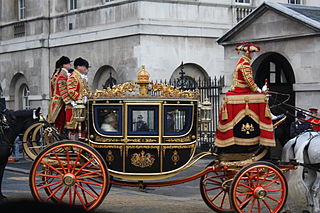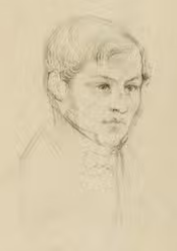
A pub is a drinking establishment licensed to serve alcoholic drinks for consumption on the premises. The term first appeared in the late 17th century, and was used to differentiate private houses from those which were open to the public as alehouses, taverns and inns. Today, there is no strict definition, but CAMRA states a pub has four characteristics:
- is open to the public without membership or residency
- serves draught beer or cider without requiring food be consumed
- has at least one indoor area not laid out for meals
- allows drinks to be bought at a bar

Soho is an area of the City of Westminster, part of the West End of London. Originally a fashionable district for the aristocracy, it has been one of the main entertainment districts in the capital since the 19th century.

OK Computer is the third studio album by the English rock band Radiohead, released in the UK on 16 June 1997 by EMI. With their producer, Nigel Godrich, Radiohead recorded most of OK Computer in their rehearsal space in Oxfordshire and the historic mansion of St Catherine's Court in Bath in 1996 and early 1997. They distanced themselves from the guitar-centred, lyrically introspective style of their previous album, The Bends. OK Computer's abstract lyrics, densely layered sound and eclectic influences laid the groundwork for Radiohead's later, more experimental work.

Fleet Street is a major street mostly in the City of London, England. It runs west to east from Temple Bar at the boundary with the City of Westminster to Ludgate Circus at the site of the London Wall and the River Fleet from which the street was named.

New Cross is an area in south-east London, England, 4.5 miles (7.2 km) south-east of Charing Cross in the London Borough of Lewisham and the SE14 postcode district. New Cross is near St Johns, Telegraph Hill, Nunhead, Peckham, Brockley, Deptford and Greenwich, and home to Goldsmiths, University of London, Haberdashers' Hatcham College and Addey and Stanhope School.

"Paranoid Android" is a song by English alternative rock band Radiohead, released as the lead single from their third studio album OK Computer (1997) on 26 May 1997. The lyrics were written by singer Thom Yorke following an unpleasant experience in a Los Angeles bar. The song is over six minutes long and contains four sections. The name is taken from Marvin the Paranoid Android from the science fiction series The Hitchhiker's Guide to the Galaxy.

The Admiral Duncan is a public house in Old Compton Street, Soho, in central London that is well known as one of Soho's oldest gay pubs.

A butler is a person who works in a house serving and is a domestic worker in a large household. In great houses, the household is sometimes divided into departments with the butler in charge of the dining room, wine cellar, and pantry. Some also have charge of the entire parlour floor and housekeepers caring for the entire house and its appearance. A butler is usually male and in charge of male servants while a housekeeper is usually a woman and in charge of female servants. Traditionally, male servants were better paid and of higher status than female servants. The butler, as the senior male servant, has the highest servant status. He can also sometimes function as a chauffeur.

A footman is a male domestic worker employed mainly to wait at table or attend a coach or carriage.

Ye Olde Cheshire Cheese is a Grade II listed public house at 145 Fleet Street, on Wine Office Court, City of London. Rebuilt shortly after the Great Fire of 1666, the pub is known for its literary associations, with its regular patrons having included Charles Dickens, G.K. Chesterton and Mark Twain.

Pub names are used to identify and differentiate traditional drinking establishments. Many pubs are centuries old, and were named at a time when most of their customers were illiterate, but could recognise pub signs. The use of signage was not confined to drinking establishments. British pubs may be named after and depict anything from everyday objects, to sovereigns, aristocrats and landowners. Other names come from historic events, livery companies, occupations, sports, and craftsmen's guilds. One of the most common pub names is the Red Lion. This list contains both modern and historical examples.

Vine Street is a street in Westminster, London, running from Swallow Street, parallel to Regent Street and Piccadilly. It is now a dead end that was shortened from a longer road in the early 18th century owing to the building of Regent Street.
The following is a list of recurring or notable fictional locations featured in the stories of P. G. Wodehouse, in alphabetical order by place name.

The Half Moon is a public house and music venue in Putney, London. It is one of the city's longest running live music venues, and has hosted live music every night since 1963.

Pedestrianism was a 19th-century form of competitive walking, often professional and funded by wagering, from which the modern sport of racewalking developed.

The Half Moon is a Grade II* listed public house at 10 Half Moon Lane, Herne Hill, London. It is one of only 270 pubs on the Campaign for Real Ale's National Inventory of Historic Pub Interiors, was frequented by the poet and writer Dylan Thomas, and was a noteworthy live music venue for nearly 50 years, hosting three gigs by U2 in 1980. In 2015, The Half Moon Public House was listed by Southwark Council as an Asset of Community Value, and is described by Nikolaus Pevsner as, "a cheerful corner pub of 1896".

The Crown and Greyhound is a Grade II listed public house at 73 Dulwich Village, Dulwich, London. It is classified by CAMRA as a pub with a regionally important historic interior. The pub is affectionately referred to by locals as "The Dog", and sometimes as "The Dog and Hat". The pub is particularly noteworthy for its post-war connection to the British poetry movement. It is described by Nikolaus Pevsner as, "a cheerfully cross gabled pub".

François Benjamin Courvoisier was a Swiss-born valet who was convicted of murdering his employer Lord William Russell in London, England, and hanged outside Newgate Prison on 6 July 1840. A crowd of around 40,000 witnessed his death, including Charles Dickens and William Makepeace Thackeray.
The LGBT community in London is one of the largest within Europe. LGBT culture of London, England, is centred on Old Compton Street in Soho. There are also LGBT pubs and restaurants across London in Haggerston, Dalston and Vauxhall.

In the United Kingdom, racial segregation occurred in pubs, workplaces, shops and other commercial premises, which operated a colour bar where non-white customers were banned from using certain rooms and facilities. Segregation also operated in the 20th century in certain professions, in housing and at Buckingham Palace. There were no British laws requiring racial segregation, but until 1965, there were no laws prohibiting racial segregation either.



















